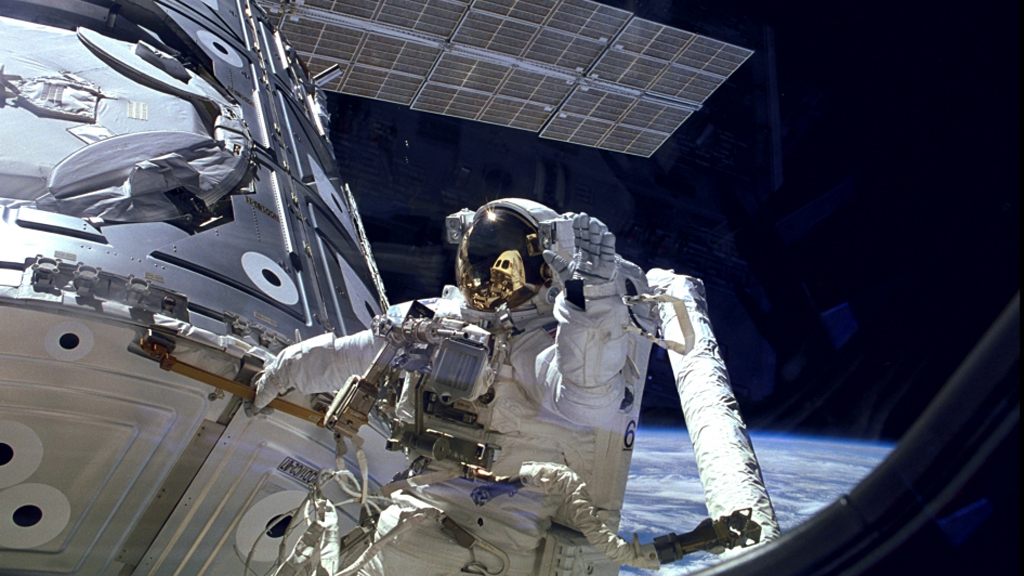Bringing space down to earth: 15 years of the ISS
Fifteen years ago the first module of the international space station was launched on board a Russian rocket. Channel 4 News explores how the ISS has opened the mysteries of space up to the world.
(Video courtesy Nasa)
Nasa describes the ISS as “the most politically complex space exploration programme ever undertaken.”

Operated by an international partnership of space agencies, led by the USA, Russia, Europe, Japan and Canada, the ISS programme is as much a human achievement as a technological accomplishment.
It’s a marked change from the 1960s, when it was the space race that epitomised the rivalry between the two superpowers, Russia and the USA.
During the past decade 15 countries have come together to design, assemble, occupy and conduct research inside and outside of the ISS, which is the largest and longest inhabited object to ever orbit the Earth.
Multiple missions
The 38th mission aboard the international space station (ISS) now underway, led by veteran Russian cosmonaut Oleg Kotov, who has previously spent almost a year aboard the ISS on two six-month missions.
His six-member crew includes American astronaut Rick Mastracchio, who regularly tweets incredible photos from space and updates on the scientific mission, using the twitter handle AstroRM:
Did you know we launch satellites from station. @Astro_Wakata uses Japanese robo arm to launch 3 small satellites. pic.twitter.com/1IBPYVLoqO
— Rick Mastracchio (@AstroRM) November 19, 2013
Building the space station has taken many years and only now are the crew able to spend more time on scientific research. Nasa scientist Dr John Charles described the ISS as “the most advanced and well-equipped research laboratory ever put into orbit.”
There are now plans to send two crew members into space for a full year to gather data about how that environment affects them over longer periods.
Commander Kotov has welcomed such research as a means to prepare for future exploration of deep space: “The crew needs to understand that they can reach other planets in good health, complete their mission successfully, and come back safely.”
US astronaut Scott Kelly and Russian cosmonaut Mikhail Kornienko have been selected for the year-long mission beginning in 2015.
Read more - Happy 15th birthday International Space Station by Liam Dutton
Powered by a massive array of solar panels, the ISS has been occupied continually since 2 November 2000.
Back then, updates from the three members of Expedition 1 came via NASA tv transmissions. During the four-month mission the crew were focussed on getting critical life support systems up and running.
But within a decade, social media opened up a new channel of communication between astronauts and a fascinated public back on earth. The first tweet from space came from Nasa astronaut Mike Massimino in 2009:
From orbit: Launch was awesome!! I am feeling great, working hard, & enjoying the magnificent views, the adventure of a lifetime has begun!
— Mike Massimino (@Astro_Mike) May 12, 2009
Within a year, live tweeting from orbit had begun:
Hello Twitterverse! We r now LIVE tweeting from the International Space Station — the 1st live tweet from Space! :) More soon, send your ?s
— TJ Creamer (@Astro_TJ) January 22, 2010
By November 2010, the ISS had its own Facebook page, complete with pictures of expedition crews.
And in May 2013 Commander Chris Hadfield posted his rendition of the Bowie classic Space Oddity to YouTube – becoming the first man to make a music video in space. At the time of writing it has been viewed over 19 million times:
International Space Station facts and figures:
Astronauts have completed 174 spacewalks totalling almost 46 days
Habitable volume: 388 cubic metres - more liveable room than a six-bedroom house
2 bathrooms, a gym and a 360 degree bay window
Solar array length: 73 metres
(Video of the international space station courtesy of Nasa)
-
Latest news
-
Boy with profound learning disabilities reaches out of court settlement after abuse in residential school7m

-
India election: Modi rivals hit by string of raids and arrests7m

-
Can UK’s abandoned mines be used to build a greener future?5m

-
Sycamore Gap: Man pleads not guilty to felling iconic tree2m

-
‘Child poverty has not fallen since Tories came in’, says Gordon Brown5m

-




